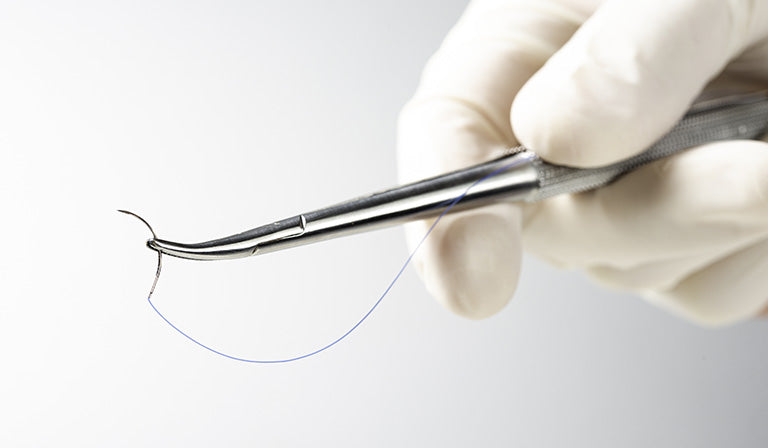

· By Trevor Horne
Suturing Needle Body Types Explained
To close most wound types, surgical suture materials are used. What is the purpose of an ideal suture? It keeps the wound closed, allowing healing tissue to recover sufficiently so the wound will remain closed after the sutures are absorbed or removed. Suturing needle body types, suture size, materials used, and more break sutures down into various categories.
Depending on the tissue type, how much support is required from sutures to hold the tissue together can vary. Commonly, the following applies:
- Vascular prosthesis sutures may be left in anywhere from months to eternity
- Tendon or facial sutures may be left in for weeks to months
- Skin, subcutaneous tissue, or muscle may have sutures remain for a matter of days
The human body reacts to any suture as a foreign body, regardless of suture composition. To varying degrees, a foreign body reaction will be produced.
Here, we'll look at surgical needles and some of their characteristics.
Suture/Surgical Needles
To place a suture within the tissue, a surgical needle is needed. With minimal residual trauma, it carries the material through the tissue. (Think of sewing with a needle and thread.)
Ideally, a surgical needle must be:
- Flexible enough to bend and not break
- But to resist distortion, rigid enough
- To permit accurate placement, it must (within a needle holder) be very stable
- It must be sharp enough to (with minimal resistance) penetrate tissue
- To minimize trauma, it must be as slim as possible
In most cases, stainless steel is used to create needles.
The Composition of Surgical Needles
The following are parts of a surgical needle:
- Needle point
Starting at the maximal point of the body, the point acts to pierce the tissue, and the sutures run to the end of the needle – which can be either blunt or sharp. When suturing some tissues, such as the oral mucous membrane or tendon sheath, caution must be exercised due to the sharpness of the needle point.
- Needle body
This might also be referred to as the shaft. Bodies can be reverse cutting, cutting, or round. It is the region grasped by the needle holder. The needle body has to be positioned closely to the diameter of the suture material to reduce leakage and bleeding in gastrointestinal, bladder and cardiovascular procedures.
- Needle end
The needle eye is categorized into closed eye, swaged eye (eyeless) and French (split) eye. Most needle eyes are now swaged. The needle is connected to the suture via a swaged end. By joining the needle and suture as a continuous component, it reduces potential for trauma and makes it easier to use.
Let's look at needle point and needle body individually.
Needle point:
- With minimal cutting, sharp needles spread and pierce tissue. Where leakage must be prevented, these are most commonly used.
- In friable tissue, and for abdominal wall closure, this needle is used. The risk of blood-borne virus infection can potentially be reduced from needlestick injuries.
Needle body:
- Reverse cutting – Ideal for tough tissue such as subcuticular or tendon sutures, on the convex edge, reverse cutting needles have a cutting surface. The risk of unintentionally cutting through tissue is induced.
- Cutting – To penetrate tough tissue such as the sternum and the skin, three cutting edges are present on this triangular-shaped cutting needle. On the concave edge, they have a cutting surface.
- Round bodied – For the kidney, liver, and other friable tissue, round body needles are used.
The Shape of the Needle
Needle shape is described as the portion of a circle completed and can vary in curvature. The most common curvatures used are as follows:
- 5/8
- 1/2
- 3/8
- 1/4
Depending on access to the area needing suturing, different curvatures are required.
When You Need Sutures, Look No Further Than ProNorth Medical Corporation
Need sutures? We've got you covered. Whether you run a veterinary clinic, dentist office, are responsible for supplying the hospital ER, buy supplies for a surgeon, or something else, we have all the sutures you'll ever need. But we don't stop there. We also have PPE equipment and other medical needs.
Your patients deserve cutting-edge equipment. Since 2011, we've been at the forefront of the medical supply industry. When you need these supplies, shop ProNorth Medical Corporation. If you have questions, feel free to contact us.